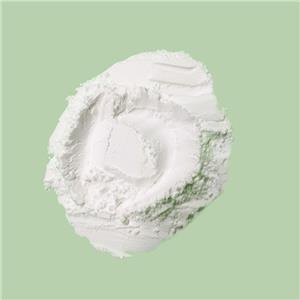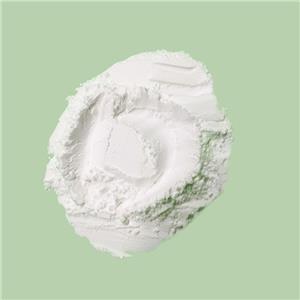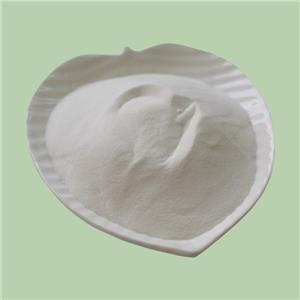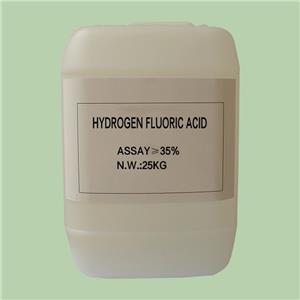The Role of Fluorosilicic Acid in Fertilizer Production
Fluorosilicic acid (H2SiF6) is a versatile chemical compound with several industrial applications, one of the most important being its role in the production of fertilizers. This article provides a detailed look at how fluorosilicic acid is utilized in this industry, from its function in waste reduction to its contribution to producing important compounds that enhance agricultural productivity.

1、Fluorosilicic Acid as a By-product in Fertilizer Manufacturing
The use of fluorosilicic acid in the fertilizer industry often begins as a by-product of phosphate fertilizer production. Phosphate fertilizers, such as diammonium phosphate (DAP) and monoammonium phosphate (MAP), are produced by treating phosphate rock with sulfuric acid. During this process, various by-products are generated, including fluorine-containing compounds.
Phosphate rock typically contains a significant amount of fluorine, and when treated with sulfuric acid, it releases silicon tetrafluoride (SiF4) and hydrogen fluoride (HF) gases. These gases are then captured and processed into fluorosilicic acid by absorbing them in water. This not only prevents the release of toxic fluorine gases into the atmosphere but also allows for the generation of a valuable chemical—fluorosilicic acid. This acid can then be sold or further processed for use in other industries, including the fertilizer sector.
2、Purification and Concentration
Before fluorosilicic acid can be utilized effectively in fertilizer production, it often undergoes purification and concentration processes. This ensures that impurities are removed, and the acid reaches a concentration suitable for further chemical reactions or direct application in certain manufacturing processes. Typically, fluorosilicic acid is sold in concentrations ranging from 20% to 30%, depending on the needs of the end user.
The purification process involves removing contaminants such as heavy metals and insoluble particles that might interfere with its industrial applications. Once purified, the concentrated fluorosilicic acid becomes a more valuable product and can be sold for use in various industries, including as an additive in fertilizers.
3、Neutralization to Produce Useful Compounds
One of the primary ways fluorosilicic acid is applied in fertilizer production is through neutralization reactions. When fluorosilicic acid is treated with different alkaline substances, it produces valuable fluoride compounds that can be directly incorporated into fertilizers.
For example:
● Sodium Fluoride (NaF): Fluorosilicic acid can be neutralized with sodium hydroxide (NaOH) to produce sodium fluoride, a compound that can be added to certain fertilizers. Sodium fluoride enhances the solubility of some phosphate fertilizers, making nutrients more readily available to plants.
● Ammonium Fluoride (NH4F): By neutralizing fluorosilicic acid with ammonia (NH3), ammonium fluoride can be produced. This compound is sometimes used as an ingredient in fertilizers to provide both nitrogen and fluoride, improving plant health and crop yields.
● Calcium Fluoride (CaF2): Fluorosilicic acid can also be neutralized with calcium-containing compounds like calcium carbonate (CaCO₃) or calcium hydroxide (Ca(OH)2) to form calcium fluoride. While calcium fluoride is less soluble, it is often used as an additive to fertilizers that are applied to soils requiring calcium supplements.
These compounds, when incorporated into fertilizers, contribute essential nutrients that support healthy plant growth and soil fertility.
4、Reducing Fluorine Pollution
In the production of phosphate fertilizers, a significant environmental concern is the release of fluorine into the atmosphere, which can lead to air and water pollution. By converting fluorine gases into fluorosilicic acid, the fertilizer industry not only mitigates environmental damage but also recycles a potentially harmful waste product into a useful material.
Fluorosilicic acid plays a crucial role in controlling fluorine emissions from phosphate fertilizer plants. The production of this acid from captured fluorine gases reduces the amount of toxic gas released during the chemical processing of phosphate rock. As a result, the risk of fluorine pollution in nearby air and water sources is minimized, making fertilizer production more environmentally sustainable.
5、Fluorosilicic Acid as a Soil Conditioner
While fluorosilicic acid itself is not typically applied directly to crops, it can be used to condition soils that are deficient in certain trace elements. Fluoride, in appropriate concentrations, can have beneficial effects on plant growth, and its presence in soil can enhance nutrient absorption.
In addition, some studies have shown that small amounts of fluorosilicic acid can help improve soil structure and microbial activity, leading to better water retention and nutrient availability. However, care must be taken to apply it in controlled amounts, as excessive fluoride in soil can be harmful to plants.
6、Sustainability and Economic Benefits
The integration of fluorosilicic acid into fertilizer production offers several sustainability and economic benefits:
● Waste Reduction: By converting hazardous by-products of phosphate fertilizer production into useful compounds like fluorosilicic acid, the industry reduces waste and pollution.
● Resource Utilization: Utilizing fluorosilicic acid allows manufacturers to extract more value from phosphate rock and other raw materials, enhancing the efficiency of fertilizer production.
● Cost-Effective Production: Since fluorosilicic acid is often produced as a by-product, its availability at a relatively low cost makes it an attractive ingredient for fertilizers, lowering overall production expenses for manufacturers.
7、Future Applications and Research
As research into the properties of fluorosilicic acid continues, new applications in fertilizer production may emerge. For instance, scientists are exploring ways to improve the efficacy of fluoride-containing fertilizers and develop more environmentally friendly formulations. Additionally, the potential for using fluorosilicic acid in conjunction with other soil conditioners and fertilizers is being investigated, aiming to enhance crop yields and promote sustainable farming practices.
Fluorosilicic acid is a valuable chemical in the production of fertilizers, where it plays multiple roles—from a waste by-product repurposed into useful compounds to a key component in reducing environmental pollution. Its neutralization products, such as sodium fluoride and ammonium fluoride, are important additives that improve fertilizer performance by enhancing nutrient availability and soil health. As the global demand for fertilizers increases, the role of fluorosilicic acid in this industry is likely to expand, contributing to both the sustainability and efficiency of agricultural practices.




